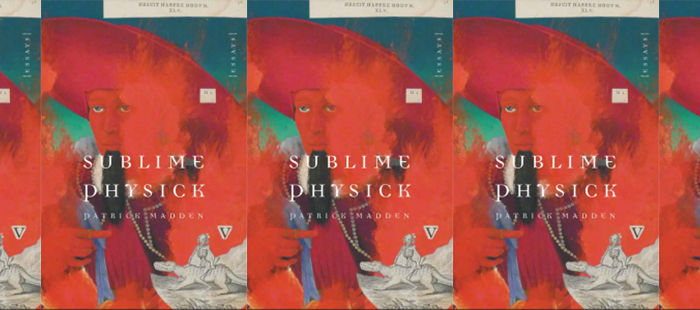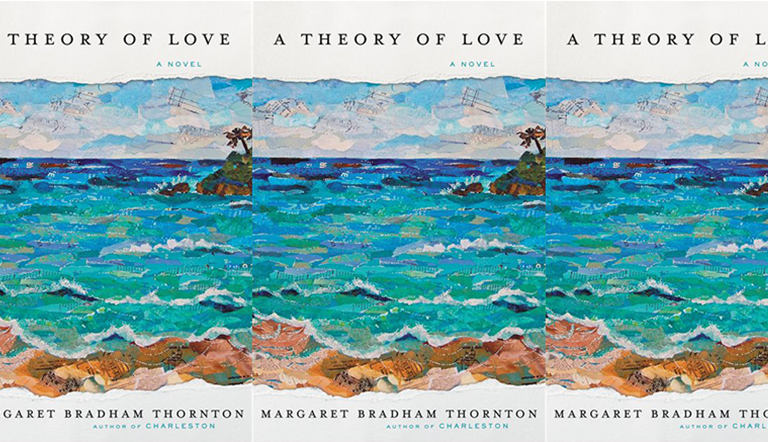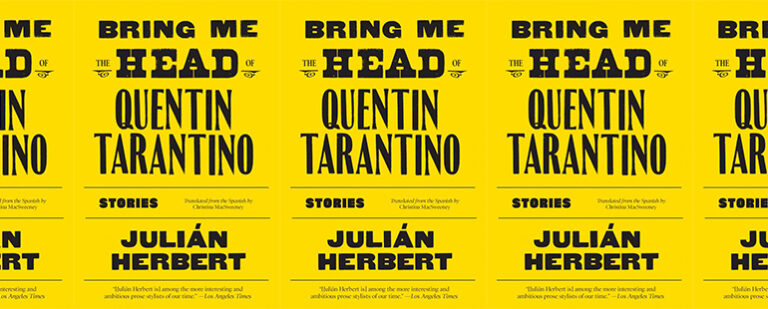Review: SUBLIME PHYSICK by Patrick Madden

Sublime Physick
Patrick Madden
University of Nebraska Press, Feb 2016
264 pp; $24.95
Reviewed by Amanda Forbes Silva
Spanning a dozen essays of various lengths and subject matter, Sublime Physick presents questions and poses possibilities in Patrick Madden’s signature cerebral, yet often comical, style. No human endeavor is insignificant, not even spitting—or better yet, gleeking, which Madden describes as an expectorant art form. And no human foible is exempt from examination, not even, “zipper negligence.”
When reading Sublime Physick, the yin-yang symbol comes to mind, as Madden cites academic thinkers and essayists from generations past, alongside contemporary popular icons, usually of the musical variety, specifically his personal favorites like John Lennon and Geddy Lee.
Readers familiar with Madden’s work, particularly Quotidiana, will recognize his sharp ability to capture ordinary dialogue and re-cast it into observations that reveal cosmic, arguably universal truths. In conversation with a recently discovered- and disparate – distant cousin who expresses his desire to be happy, or at least, satisfied:
After nearly half an hour, Kevin explained, “I kinda gotta go. I got my mom looking at me, staring about dinner being ready,” but we kept talking for several more minutes, mostly about my plans for the essay (I really didn’t know what I’d do with, I said; I’d figure that out in the writing) and about Kevin’s current limbic state. “I’m just really in the search mode,” he said. “I’m just trying to figure my *** out, to be honest. I just want to be good with ***. That’s all I’m looking for. I just want to be content.
Reflecting, Madden writes, “And I thought, as I often do, about how we all want the same things and how ‘every man contains within himself the entire human condition.’” Those new to Madden’s work are introduced to the connection he threads between our own lives and the lives of those we do not know. Grasping tightly this invisible thread, we might trace greater understanding between the two and recognize more of ourselves in the “other.”
Following this is another thought-provoking aspect of Madden’s work, presented in the form of binaries and the beauty found in the moments when opposing forces collide; in other words, when the concrete becomes an abstraction. These considerations inspired Madden’s title, one that represents the duality of essays as a literary form and a way of thinking. If there are two sides to every story, there are at least that many sides of an essay, and the act of essaying itself involves negotiating those sides into a entity that, for its singular presentation, contains opposition. Within that opposition, there is beauty and meaning. Perhaps most compelling for our current social and political climate is Madden’s poignant reflection that “there is always more to the story than what I’m reading and that there is always a complex human being behind every seemingly boneheaded act.”
Writing from an academic, yet approachable stance, Madden offers a definition of creative nonfiction, a genre still considered relatively new in the greater literary scheme, and one whose nuances challenge writers, teachers, and students alike for its often-elusive and contradictory qualities. In the absence of a singular, concrete definition of creative nonfiction, Madden suggests “We do not write (if we write well) only what happened; we explore our memory, grasping at meaning, to explain ourselves to ourselves.”
In explaining ourselves we must rely on our imaginations, which perhaps complicates the “non” in nonfiction for some readers. As it should because, after all, imagination is at the heart of creative nonfiction writing. Consider Madden’s observation: “our imagination creates the stories that tie our observations together.” How else can we understand and share our experiences if not by imagining their significance and considering their greater currency in the larger, storytelling—or better yet—essaying world?
Madden’s “essaying” includes an especially timely piece written in memoriam for the late Eduardo Galeano, with whom Madden shared what he describes as both literal and literary travels. Equally committed to the narratives of those celebrated by society, and those condemned, those who shine light alongside those who spread darkness, Galeano was passionate about animating all of us, exploring the narratives of both heroes and villains. Madden explains the essence of Galeano’s work, “A history book would give you more information, certainly, but Galeano gives you a deeper access, a connection.”
Patrick Madden, a writer committed to details, precision, and the intense investigation of meaning and etymology (admittedly, he writes with a dictionary at hand), masterfully strengthens that same kind of connective tissue with Sublime Physick, a collection of moments that culminate in lives both exalted and ordinary.
Amanda Forbes Silva received her MFA from Vermont College of Fine Arts in 2012. Her work has been published in bioStories, later anthologized in bioStories’ Mothers and Other Creatures, Empty Sink, Emrys Journal, The Riding Light Review, and Vine Leaves Literary Journal, later anthologized inThe Best of Vine Leaves Literary Journal 2012. Interested readers are invited to check out her website.


